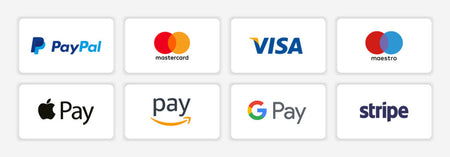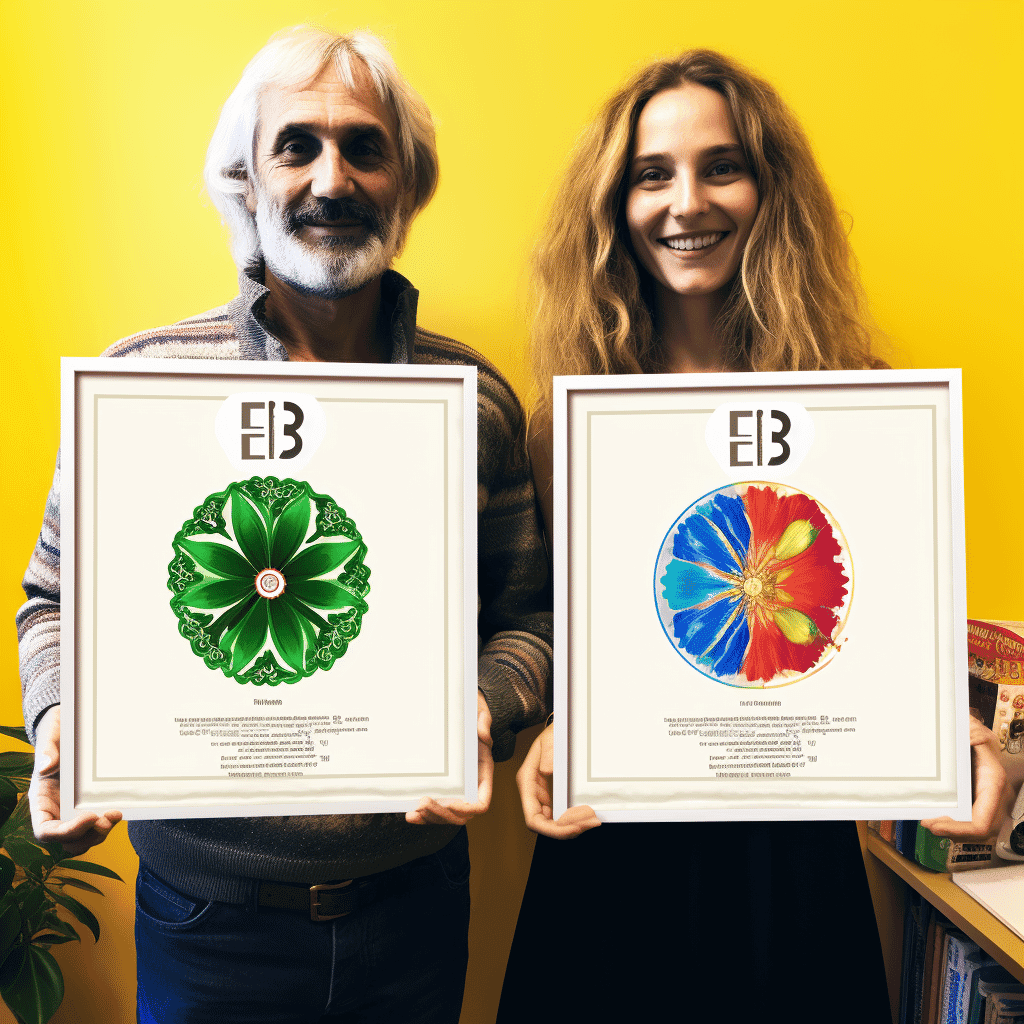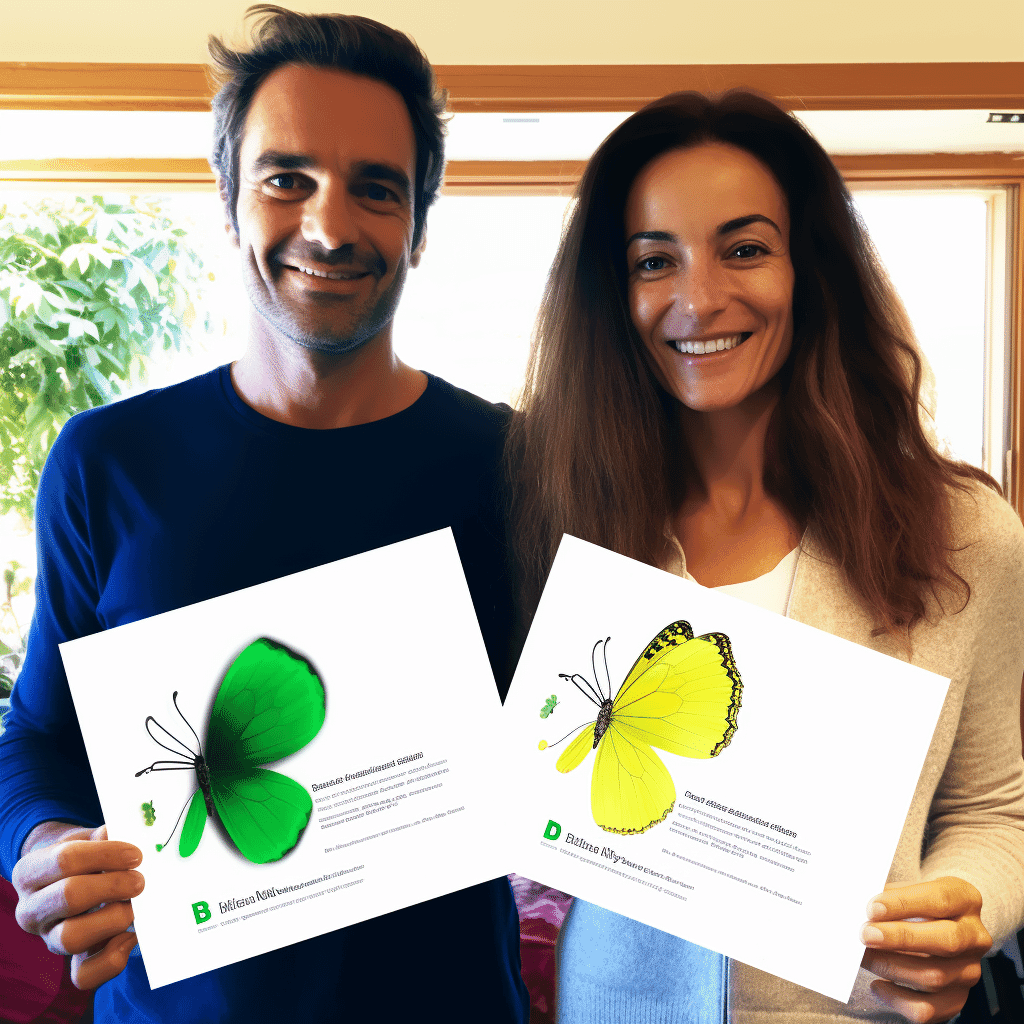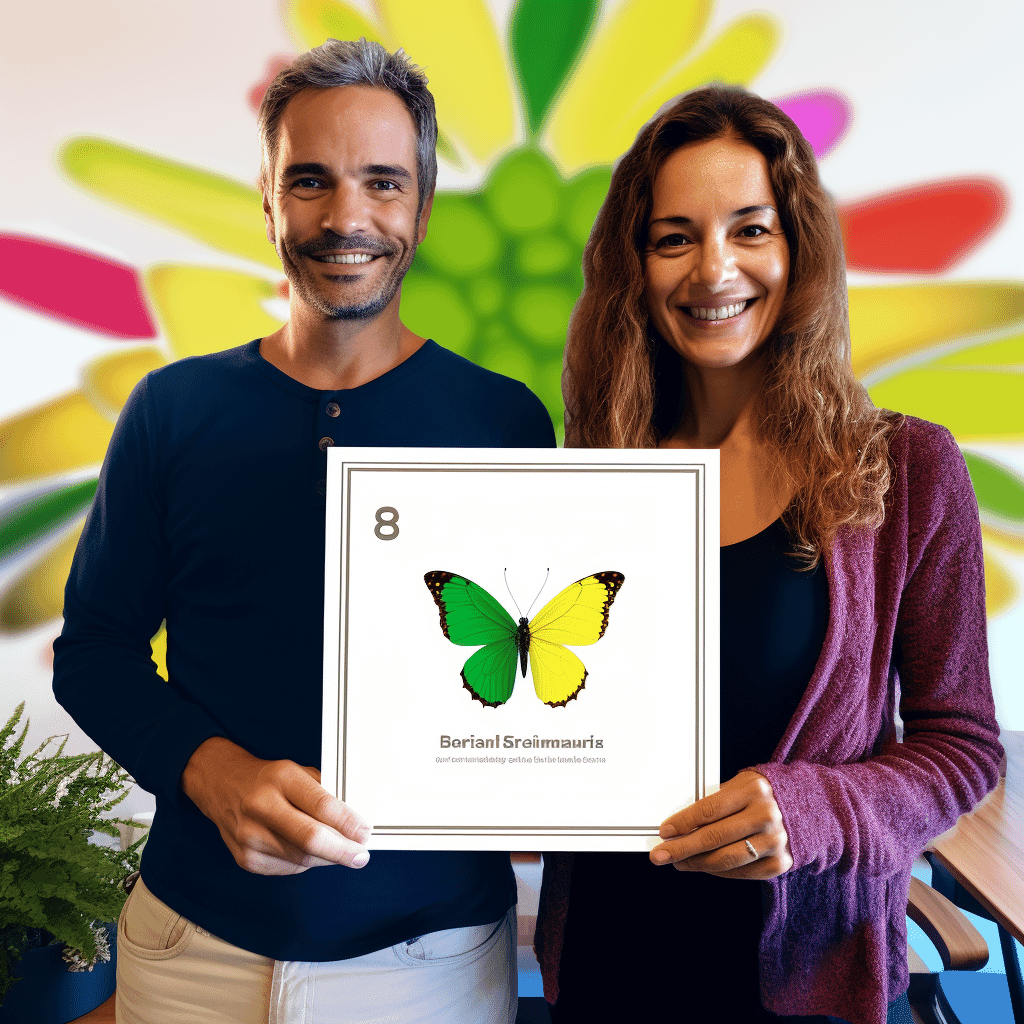Descrição
Good Practices in Food Handling Course
If you work or intend to work in the food industry, it is essential to know and apply good practices in food handling. These practices ensure food safety and the quality of the products offered to consumers.
Why are good practices important?
Good practices in food handling are essential to prevent contamination of food by microorganisms, such as bacteria and viruses, which can cause diseases. In addition, these practices also contribute to the preservation of nutrients and the maintenance of the sensory characteristics of food.
What is covered in the course?
The Good Practices in Food Handling course covers several essential topics to ensure food safety. The main topics covered include:
- Personal hygiene: the importance of washing hands properly, wearing appropriate uniforms and keeping hair and nails well-groomed;
- Hygiene of utensils and equipment: how to properly sanitize knives, cutting boards, pans and other utensils used in food handling;
- Proper storage: guidelines on the temperature and storage time of food, avoiding the proliferation of microorganisms;
- Pest control: measures to prevent the presence of insects, rodents and other unwanted animals in the food handling environment;
- Waste disposal: how to properly dispose of solid waste, avoiding contamination of the environment;
- Temperature control: the importance of keeping food refrigerated or heated properly to prevent the multiplication of microorganisms;
- Labeling and consumer information: guidelines on correct labeling of food, including nutritional and allergen information.
The course is taught by professionals specialized in the area of food safety, who share theoretical and practical knowledge, in addition to promoting interactive activities to consolidate learning.
Advantages of taking the course
By taking the Good Practices in Food Handling course, you will be able to work in accordance with current health standards, ensuring food safety and customer satisfaction. In addition, the certificate obtained at the end of the course is a differentiator on your resume, increasing your chances of entering the job market.
Don't miss the opportunity to train and stand out in the food industry. Enroll in the Good Practices in Food Handling course and acquire fundamental knowledge for your professional success!
| Course information | Location | Date |
|---|---|---|
| Good Practices in Food Handling Course | Food Training Center | Next class: August 15 |
| Good Practices in Food Handling Course | Online | Available at any time |
Secure your spot and invest in your professional career. Learn good practices in food handling and become a leading professional in the field!
What is the Good Practices in Food Handling course like?
If you work or intend to work in the food industry, it is essential to know and apply good practices in food handling. These practices ensure the safety and quality of products, preventing contamination and preserving the health of consumers.
What are good practices in food handling?
Good practices in food handling are a set of measures and procedures that must be followed by everyone involved. gone in the food chain, from production to consumption. They range from the personal hygiene of food handlers to the proper storage of food.
These practices include:
- Personal hygiene: correct hand washing, use of clean and appropriate uniforms, use of disposable gloves, among others;
- Hygiene of utensils and equipment: proper cleaning and disinfection;
- Temperature control: storage and transportation of food at appropriate temperatures;
- Control of expiration dates: checking and discarding expired food;
- Pest control: prevention and control of insects and rodents;
- Proper handling: avoid cross-contamination, that is, contact between raw and cooked food;
- Correct labeling: clear information about ingredients, manufacturing date and expiration date.
Why take the Good Practices in Food Handling course?
The Good Practices in Food Handling course is essential for those who work or intend to work in the food industry. It provides theoretical and practical knowledge about the standards and procedures necessary to ensure food safety.
In addition, taking the course is a legal requirement in many countries and can be a differentiator on your resume, increasing your chances of getting a job in the field.
What is the Good Practices in Food Handling course like?
The Good Practices in Food Handling course can be taken in person or online. It covers the following topics:
- Personal and handler hygiene;
- Utensil and equipment hygiene;
- Temperature control;
- Expiration date control;
- Pest control;
- Proper handling;
- Correct labeling;
- Health legislation;
- Good practices in food production;
- Good practices in food transportation and storage.
The course can be taken at specialized institutions, such as technical schools and universities, or through online courses. It is important to choose a recognized institution that offers a certificate at the end of the course.
Sitelinks
Sitelinks are additional links that appear in Google search results, below the main link of a website. They facilitate user navigation, directing them to specific pages within the website.
Reviews
Reviews are evaluations made by users about a product, service or company. They can appear in search results and influence consumers' purchasing decisions.
People also ask
The "People also ask" section displays questions related to the term searched by the user. These questions are generated based on the most common doubts of users and can provide additional information on the subject.
Knowledge panel
The knowledge panel is an information box that appears in Google search results. It displays relevant information about an entity, such as a company, person or place, bringing together data from different sources.
FAQ
The FAQ (Frequently Asked Questions) section presents frequently asked questions and their answers on a given subject. It can be useful for clarifying user doubts and providing additional information.
Top stories
The "Top stories" section displays the main news related to the search term. It is updated in real time and can be useful for those looking for recent information on a particular topic.
Recipes
The recipes section displays recipes related to the search term. It can be useful for those looking for culinary inspiration u instructions for preparing a specific dish.
Find results on
The "Find results on" option allows the user to refine their search and find results on specific websites. This can be useful for those seeking information from reliable or specialized sources.
See results about
The "See results about" option displays search results related to a specific term. It can be useful for exploring different aspects of a given subject.
Related searches
The "Related searches" section displays terms related to the term searched by the user. It can be useful for expanding the search and finding additional information on the subject.
In summary, the Good Practices in Food Handling course is essential to ensure food safety and quality. It covers topics such as personal hygiene, temperature control and proper handling. In addition, it is important to pay attention to SERP features, such as sitelinks, reviews and knowledge panel, which can provide additional information and facilitate the search for knowledge on the subject.
What is a course in good practices in food handling?
When it comes to food handling, safety and quality are fundamental aspects. To ensure that food is prepared and handled properly, it is essential that professionals in the area undergo a course in good practices in food handling.
Why is it important to take a course in good practices in food handling?
Improper food handling can lead to contamination and cause serious health problems for consumers. A course on good practices in food handling aims to train professionals to adopt correct hygiene, storage and food preparation measures, ensuring food safety.
What is covered in a course on good practices in food handling?
A course on good practices in food handling covers several topics, such as:
- Personal hygiene;
- Hygiene of utensils and equipment;
- Proper food storage;
- Temperature control;
- Prevention of cross-contamination;
- Correct food handling;
- Health legislation;
- Among others.
These courses are taught by professionals specialized in the area of food safety and are essential to ensure that establishments that handle food comply with standards sanitary.
Sitelinks
Sitelinks are additional links displayed in search results that direct users to specific pages on a website. In the case of a course on good practices in food handling, sitelinks can direct to information about the program content, course dates and registration methods.
Reviews
Reviews are evaluations made by people who have already taken the course on good practices in food handling. These evaluations can be found on specialized websites or on social networks and help interested parties to learn about the quality and effectiveness of the course.
People also ask
Frequently asked questions by users about the course on good practices in food handling can be found in the "People also ask" section in the search results. These questions may include questions about the length of the course, certification obtained, and requirements for participation.
Knowledge panel
The knowledge panel is an information box displayed in search results that provides a summary of the food handling best practices course. This box may include information such as the length of the course, institutions offering the training, and the importance of certification.
FAQ
If you have any questions, please contact us. The frequently asked questions (FAQ) section is an important part of a website or page related to the course on good practices in food handling. This section answers the most common questions from users, such as requirements for participation, validity of certification and payment methods.
Top stories
Top stories are recent news related to the course on good practices in food handling. These news items may address new regulations, cases of food contamination and advances in the area of food safety.
Recipes
Although the main focus is on safe food handling, a course on good practices in food handling can also address healthy recipes and practices for preparing food. These recipes may be available on the course website or in supplementary materials.
Find results on
The "Find results on" option in the search results allows users to find additional information about the good practices in food handling course on specialized websites, such as blogs, forums and news portals.
See results about
The "See results about" option in the search results displays links related to the good practices in food handling course. These links may direct to information about similar courses, health legislation and scientific studies in the area of food safety.
Related searches
The "Related searches" section in the search results shows terms related to the good practices in food handling course that may be of interest to users. These terms may include "food hygiene," "safe food handling," and "food safety certification."
In short, a course on good food handling practices is essential to ensure the safety and quality of the food we consume. When searching for information about this type of course, you can find sitelinks, reviews, frequently asked questions, news, recipes, and more. Through these SERP features, users can get all the information they need to make the right choice and become qualified in the area of food safety.
What is the best course on good food handling practices?
When it comes to food handling, safety and hygiene are fundamental. Therefore, it is essential that professionals working in this area are properly trained and up to date on good practices. In this blog, we will talk about the best course on good practices in food handling and how it can make a difference in your career.
The importance of good practices in food handling
Inadequate food handling can cause serious health problems, such as food poisoning. Therefore, it is essential to follow the good practices established by regulatory agencies, such as the National Health Surveillance Agency (ANVISA).
Good practices in food handling involve everything from the personal hygiene of food handlers to the correct storage of products. In addition, it is necessary to know food safety standards and be aware of updates and changes in legislation.
The best course on good practices in food handling
There are several courses available on the market that address good practices in food handling. However, it is important to choose a course that is recognized and that offers complete and up-to-date content.
One of the most recommended courses is the Good Practices in Food Handling Course offered by XYZ Company. This course is taught by experienced professionals and covers all aspects related to safe food handling.
The XYZ Good Practices in Food Handling Course has a workload of 16 hours and is divided into modules that cover everything from hygiene to personal hygiene to pest control. In addition, the course offers a certificate of completion, which is recognized by regulatory agencies.
Benefits of taking the course on good practices in food handling
Taking a course on good practices in food handling brings several benefits to professionals in the field. In addition to ensuring food safety, the course can also open doors to new job opportunities and career growth.
With the certificate of completion of the course, professionals have a greater chance of being hired by establishments that require training in good practices. In addition, the knowledge acquired in the course can be applied in everyday life, ensuring the quality and safety of the food handled.
Sitelinks
Sitelinks are additional links that appear in Google search results. They help users navigate directly to specific pages on a website. In the case of the food handling best practices course, sitelinks can direct you to information about the course content, course duration, fees, and registration methods.
Reviews
Reviews are assessments made by people who have already taken the food handling best practices course. They can be found on specialized websites, such as TripAdvisor, or on the social networks of the company offering the course. Reviews help interested parties learn about other people's experiences and make a more informed decision.
People also ask
Frequently asked questions about the food handling best practices course can be found in the "People also ask" section of Google search results. These questions are asked by users and answered by experts. Some examples of questions are: "How long is the course?", "What are the prerequisites for taking the course?" and "Is the certificate recognized by ANVISA?".
Knowledge panel
The knowledge panel is an information box that appears in Google search results. It provides a summary of the course on good practices in food handling, including information such as the company offering the course, the course load, prerequisites, and the benefits of taking the course.
FAQ
The frequently asked questions (FAQ) section is an important part of the website of the company offering the course on good practices in food handling. In this section, interested parties can find answers to the main questions about the course, such as prices, payment methods, program content, and certification.
Top stories
The top stories are recent news related to the course on good practices in food handling. These news items may cover topics such as updates to legislation, cases of food poisoning, and news in the area of food safety.
Recipes
Although the course on good food handling practices is not directly related to culinary recipes, it is possible to find healthy and safe recipes in the search results. These recipes can be useful for professionals who want to offer healthier options to consumers.
Find results on
The "Find results on" option in Google search results allows users to find additional information about the course on good food handling practices on other reliable websites. This may include articles, case studies, and supplementary materials.
See results about
The "See results about" option in Google search results shows other topics related to the course on good food handling practices. This may include information about similar courses, food safety events, and news about the importance of proper food handling.
Related searches
Related searches The best food handling practices course links can be found in the "Related searches" section of Google search results. These searches are made by other users and can help you find additional information on the subject, such as online courses, recommended books, and educational videos.
In short, the best food handling practices course is one that offers complete and up-to-date content, is recognized by regulatory agencies, and has good reviews from people who have already taken the course. In addition, it is important to pay attention to SERP features, such as sitelinks, reviews, people also ask, knowledge panel, FAQ, top stories, recipes, find results on, see results about, and related searches, which can provide additional information and help you choose the ideal course.
What is the purpose of the food handling practices course?
When it comes to food handling, safety and quality are fundamental aspects. That is why the food handling practices course is so important. In this blog, we will explore the importance of this course and how it can benefit both food professionals and consumers.
What are good practices in food handling?
Good practices in food handling are a set of measures and procedures that aim to ensure the safety and quality of food from its production to final consumption. These practices range from the correct storage of food to the proper sanitation of utensils and equipment used in handling.
Benefits of the good practices in food handling course
The good practices in food handling course offers a series of benefits for both food professionals and consumers. Some of these benefits include:
- Greater food safety: The course teaches hygiene and handling techniques that help prevent food contamination by microorganisms that are harmful to health.
- Food quality: By following good practices, food maintains its quality and nutritional characteristics, ensuring a pleasant experience for the consumer.
- Compliance with legislation: The course addresses current standards and regulations, ensuring that professionals comply with health legislation.
- Reduced waste: By handling food correctly, waste caused by contamination or premature deterioration is avoided.
Sitelinks
Sitelinks are additional links displayed in search results that direct users to specific pages on a website. In the case of the food handling best practices course, sitelinks can include information about the course content, such as course load, modules, and certification.
Reviews
Reviews are assessments made by people who have already taken the food handling best practices course. These reviews can help interested parties make an informed decision about the quality and effectiveness of the course.
People also ask
Frequently asked questions about the food handling best practices course may include:
- How long is the course?
- What are the requirements to take the course?
- Is the course recognized by the health surveillance agency?
Knowledge panel
The knowledge panel is an information box displayed in search results that provides a summary of the food handling best practices course. This box can include information such as the course definition, its importance, and the benefits it offers.
FAQ
The frequently asked questions (FAQ) section about the course Food handling practices may include:
- What topics will the course cover?
- How can I enroll in the course?
- Is the course valid nationwide?
Top stories
Top stories are recent news stories related to the food handling practices course. These stories may include updates on regulations, food contamination cases, and food safety tips.
Recipes
While the main focus is the food handling practices course, it is also possible to include recipes related to food safety. These recipes may highlight the importance of correct handling techniques to prevent food contamination.
Find results on
The "Find results on" option allows users to find additional results about the food handling practices course on other trusted websites. This may include additional information, case studies, and supporting materials.
See results about
The "See results about" option displays search results related to specific topics about the course on good food handling practices. This may include information on health legislation, hygiene techniques, and tips to avoid food contamination.
Related searches
Searches related to the course on good food handling practices may include:
- How can I get certified in good food handling practices?
- What are the courses related to food safety?
- What are the main sanitary standards for food handling?
In summary, the course on good food handling practices is essential to ensure food safety and quality. By following good practices, food professionals can avoid contamination and offer safe products to consumers. In addition, the course also helps reduce waste and comply with health legislation. Therefore, if you work with food or are interested in learning more about food safety, be sure to take the course on good practices in food handling.
Who can take the course on good practices in food handling?
If you work or intend to work in the food sector, it is essential to have knowledge about good practices in food handling. These practices are essential to ensure food safety and avoid health problems for consumers.
To take a course on good practices in food handling, there are no restrictions on academic background. Anyone interested in acquiring knowledge on the subject can participate.
Why take a course on good practices in food handling?
A course on good practices in food handling offers several benefits to professionals in the food sector, such as:
- Technical knowledge: The course provides theoretical and practical knowledge on the correct standards and procedures for handling food.
- Food safety: By following good practices, it is possible to guarantee the quality and safety of food, avoiding contamination and foodborne illnesses.
- Compliance with legislation: Brazilian legislation requires that establishments that handle food have a technical manager trained in good practices. Taking the course is a way to meet this requirement.
- Job opportunities: Having knowledge of good practices in food handling can open doors to job opportunities in restaurants, snack bars, food industries, among others.
What is covered in a course? m course on good practices in food handling?
A course on good practices in food handling covers several topics, such as:
- Personal hygiene;
- Food hygiene;
- Pest control;
- Correct food storage;
- Proper food handling;
- Temperature control;
- Utensil and equipment hygiene;
- Health legislation;
- Among others.
How to find courses on good practices in food handling
There are several institutions that offer courses on good practices in food handling. You can find these courses at technical schools, vocational training institutions, unions, associations and even online.
To find courses near you, you can use search engines like Google and search for terms like "good practices course in food handling + your city".
In addition, it is important to check whether the chosen course is recognized by the competent agencies, such as the Health Surveillance Agency.
Conclusion
Taking a course in good practices in food handling is essential for all professionals who work with food. In addition to ensuring food safety, the course provides technical knowledge and opens doors to job opportunities in the area.
Therefore, if you are interested in working in the food industry or already work in this field, be sure to invest in your training and take a course on good practices in food handling.
References:
How long does a course on good food handling practices last?
If you are interested in working in the food industry, it is essential to have knowledge about good food handling practices. These practices ensure the safety and quality of the food that is served to consumers.
A course on good food handling practices is an excellent way to acquire this knowledge. But you may be wondering: how long does this course last?
Course duration
The duration of a course on good food handling practices can vary depending on the institution that offers it. However, on average, this type of course has a workload of 8 to 16 hours.
It is important to note that the minimum workload required by Brazilian legislation for certification in good food handling practices is 4 hours. Therefore, when choosing a course, check whether it meets this minimum requirement.
Course content
The content of the good practices in food handling course covers several important topics. Some of the main topics covered are:
- Personal hygiene;
- Food hygiene;
- Pest control;
- Proper storage;
- Proper food handling;
- Health legislation;
- Among others.
These topics are essential to ensure food safety and prevent food contamination by microorganisms that are harmful to health.
Benefits of the course
Taking a course on good practices in food handling brings several benefits both for professionals who wish to work in the food sector and for commercial establishments that deal with food handling.
Some of the benefits include:
- Improved quality and food
Estimar frete
Payment & Security

Featured collection





















![Curso de Angular e NodeJS - O Guia da Pilha MEAN [Edição 2023] - IBRATH Instituto Brasileiro de Terapias Holísticas teste011020230809](http://enciclopedia.paginasdabiblia.com/cdn/shop/products/a19556.png?v=1699935448&width=1024)




![Curso de Docker & Kubernetes: O Guia Prático [Edição 2023] - IBRATH Instituto Brasileiro de Terapias Holísticas teste011020230809](http://enciclopedia.paginasdabiblia.com/cdn/shop/products/a19570.png?v=1699935525&width=1024)





















Dúvidas Gerais
Após a confirmação do pagamento, você receberá um e-mail com todas as instruções para acessar seus cursos. O e-mail incluirá um link para a plataforma de ensino, onde você poderá fazer login utilizando suas credenciais cadastradas no momento da compra. Caso seja um curso em formato de arquivo para download, o mesmo estará disponível na área do aluno e poderá ser acessado diretamente pelo link enviado. Se você não receber o e-mail de acesso em até 24 horas, verifique sua caixa de spam ou entre em contato com nossa equipe pelo e-mail suporte@amentil.com.br.
Após a confirmação do pagamento, seu pedido será processado e enviado para o endereço cadastrado. Você receberá um e-mail com os detalhes do envio, incluindo o código de rastreamento para acompanhar a entrega. Trabalhamos com transportadoras confiáveis e os prazos variam de acordo com o método de envio escolhido e sua localização. É importante garantir que o endereço de entrega esteja correto para evitar atrasos. Caso tenha dúvidas ou problemas com a entrega, nossa equipe de suporte está à disposição pelo e-mail suporte@amentil.com.br.
Você pode tirar dúvidas diretamente com nossa equipe de suporte por diversos canais:
- E-mail: Envie sua pergunta para suporte@amentil.com.br, e nossa equipe responderá em até 2 dias úteis.
- Telefone: Ligue para +55 (48) 1234-5678, disponível de segunda a sexta, das 9h às 18h.
- WhatsApp: Envie uma mensagem para +55 (48) 91265-4321 e receba atendimento rápido e prático.
- Formulário de Contato: Preencha o formulário disponível em nosso site na página Contato.
- Redes Sociais: Você também pode enviar suas dúvidas pelo Instagram ou Facebook em @amentil.sa.
Estamos sempre prontos para ajudar!
Reembolso e garantias
O prazo de reembolso pode variar dependendo da forma de pagamento utilizada:
- Cartão de Crédito: O estorno será realizado em até 7 dias úteis após a aprovação do reembolso, mas o crédito poderá aparecer na sua fatura em um prazo de 30 a 60 dias, conforme a política da operadora do cartão.
- Boleto Bancário ou Transferência: O valor será devolvido via depósito em conta bancária em até 7 dias úteis após a aprovação do reembolso.
Você pode solicitar a devolução de produtos físicos seguindo o passo a passo abaixo:
- Entre em contato com nosso suporte:
- Aguarde nossa resposta:
Nossa equipe analisará sua solicitação em até 3 dias úteis e fornecerá as instruções detalhadas para a devolução. - Prepare o produto:
- Envie o produto:
- Reembolso ou troca:
Nosso compromisso é fornecer uma experiência confiável e segura ao acessar nossa enciclopédia online. Garantimos a qualidade dos serviços e funcionalidades oferecidos, seguindo as condições descritas abaixo:
1. Garantia de Acesso
- Disponibilidade: Oferecemos garantia de disponibilidade da enciclopédia online 24 horas por dia, 7 dias por semana, exceto durante períodos programados de manutenção ou por problemas técnicos fora do nosso controle.
- Resolução de Problemas: Em caso de interrupções no serviço, nossa equipe técnica atuará para restaurar o acesso no menor tempo possível.
2. Garantia de Conteúdo
- Precisão e Atualização: Todo o conteúdo disponibilizado é cuidadosamente revisado para garantir precisão e relevância. No entanto, a enciclopédia online é constantemente atualizada, e não podemos garantir a exatidão absoluta em casos de informações sujeitas a mudanças rápidas.
- Correção de Erros: Caso identifique erros ou inconsistências no conteúdo, você pode nos informar pelo e-mail conteudo@amentil.com.br, e faremos a análise e correção, se necessário.
3. Garantia de Segurança
- Proteção de Dados: Utilizamos tecnologias avançadas para proteger suas informações pessoais e garantir que sua navegação na enciclopédia seja segura.
- Privacidade: Todos os dados coletados seguem as diretrizes da nossa Política de Privacidade.
4. Garantia de Reembolso
Para assinaturas da enciclopédia online:
- Direito de Arrependimento: Você pode solicitar o cancelamento e reembolso integral em até 7 dias corridos após a compra, desde que não tenha acessado conteúdos pagos da plataforma.
- Problemas Técnicos: Caso não consiga acessar os conteúdos devido a falhas técnicas imputáveis à plataforma, garantimos suporte prioritário e, se o problema não for resolvido, você pode solicitar reembolso proporcional ao período não utilizado.
5. Limitações
- Conexão à Internet: Não garantimos acesso à enciclopédia em situações de instabilidade ou falhas na conexão de internet do usuário.
- Uso Indevido: O acesso e uso da enciclopédia são pessoais e intransferíveis. O compartilhamento de credenciais pode resultar na suspensão ou cancelamento da assinatura sem reembolso.
6. Contato para Garantias
Caso precise de suporte ou queira exercer algum direito de garantia, entre em contato conosco:
- E-mail: suporte@amentil.com.br
- Telefone: +55 (48) 1234-5678
- Horário de atendimento: Segunda a sexta, das 9h às 18h.



